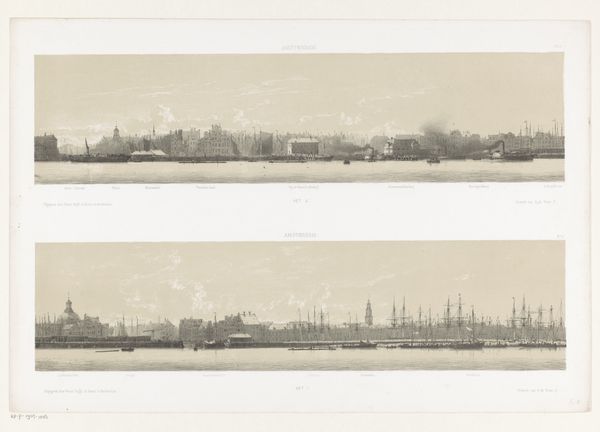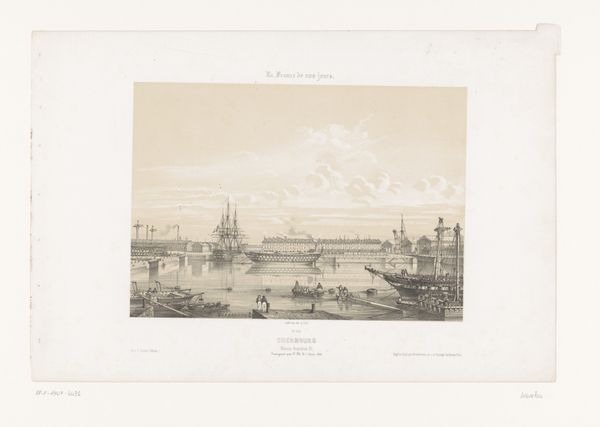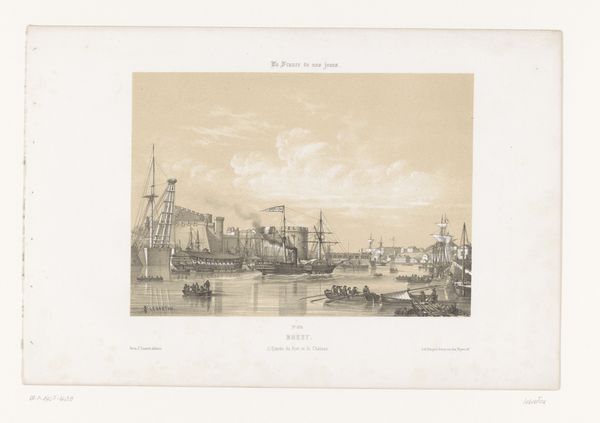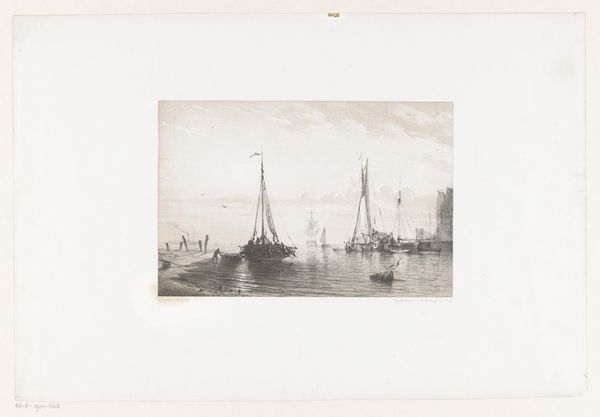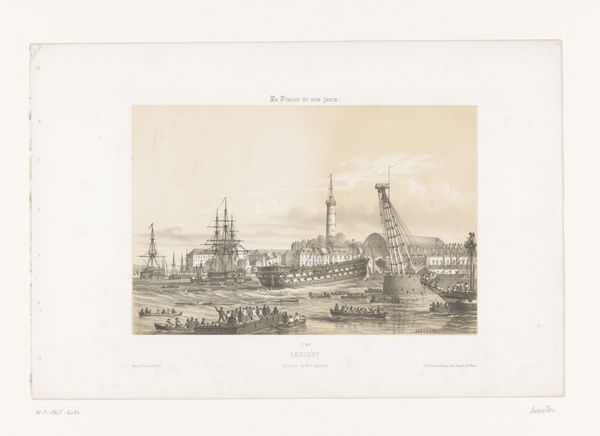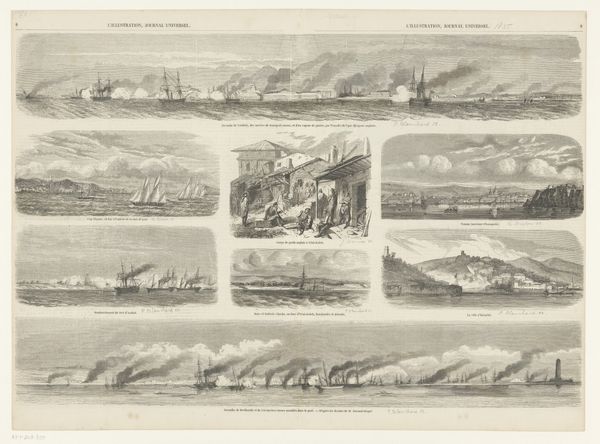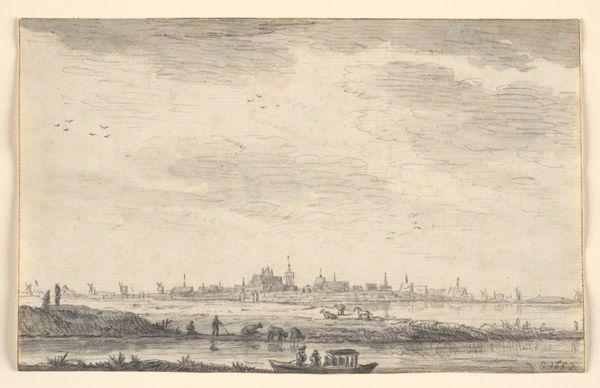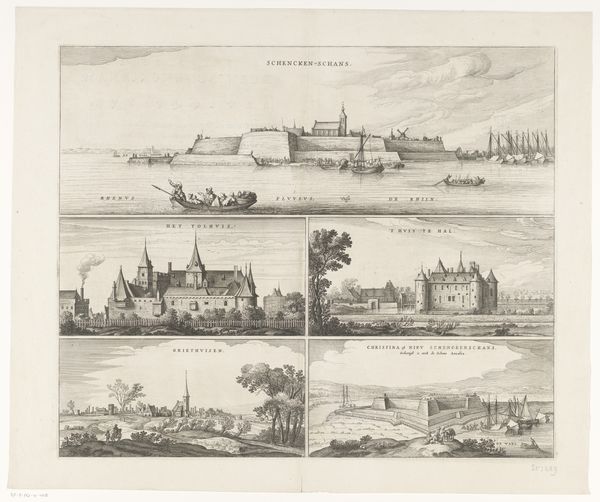
print, etching
#
dutch-golden-age
# print
#
etching
#
pencil sketch
#
etching
#
cityscape
#
realism
Dimensions: height 360 mm, width 545 mm
Copyright: Rijks Museum: Open Domain
Editor: This print, "Twee profielen van Rotterdam" by Johan Conrad Greive, created around 1860, is an etching, capturing two views of Rotterdam. I find it striking how the industrial elements coexist with sailing ships, reflecting a city in transition. What aspects stand out to you? Curator: The most compelling element here is the printmaking process itself. Look at the fine lines, achieved through etching. Each line demanded a craftsman's skill, transforming industrial growth and maritime traffic into repeatable images accessible for consumption. The etching medium itself reflects the mass production of images made possible by the Industrial Revolution. It democratized art to a degree, even while reinforcing class structures. How do you see the materials relating to the depicted scenes of labor and industry? Editor: I see what you mean. The etching is itself a product of labor, echoing the shipbuilding and trade it depicts. The city looks industrious and industrious! But is this accessibility a real democratization, if only certain people could still afford art prints? Curator: Precisely! That tension is key. The materials and the processes expose a complex web of labor, capital, and consumption. Greive used etching because it offered a means for broader dissemination than, say, a unique oil painting, thus appealing to a market that both needed cheap visuals but was at the same time being transformed by that industry’s pollution and pressures on the urban workforce. Editor: So, by examining the material and its method of production, we gain insights not only into the art itself but also into the societal dynamics it represents. It really challenges that traditional distinction between "high art" and everyday commercial reality. I hadn’t thought of it that way. Thanks for the fresh perspective. Curator: Understanding art means understanding how it’s made, for whom, and under what material conditions. Examining these prints gives insight to industrial expansion into Rotterdam at the time.
Comments
No comments
Be the first to comment and join the conversation on the ultimate creative platform.
